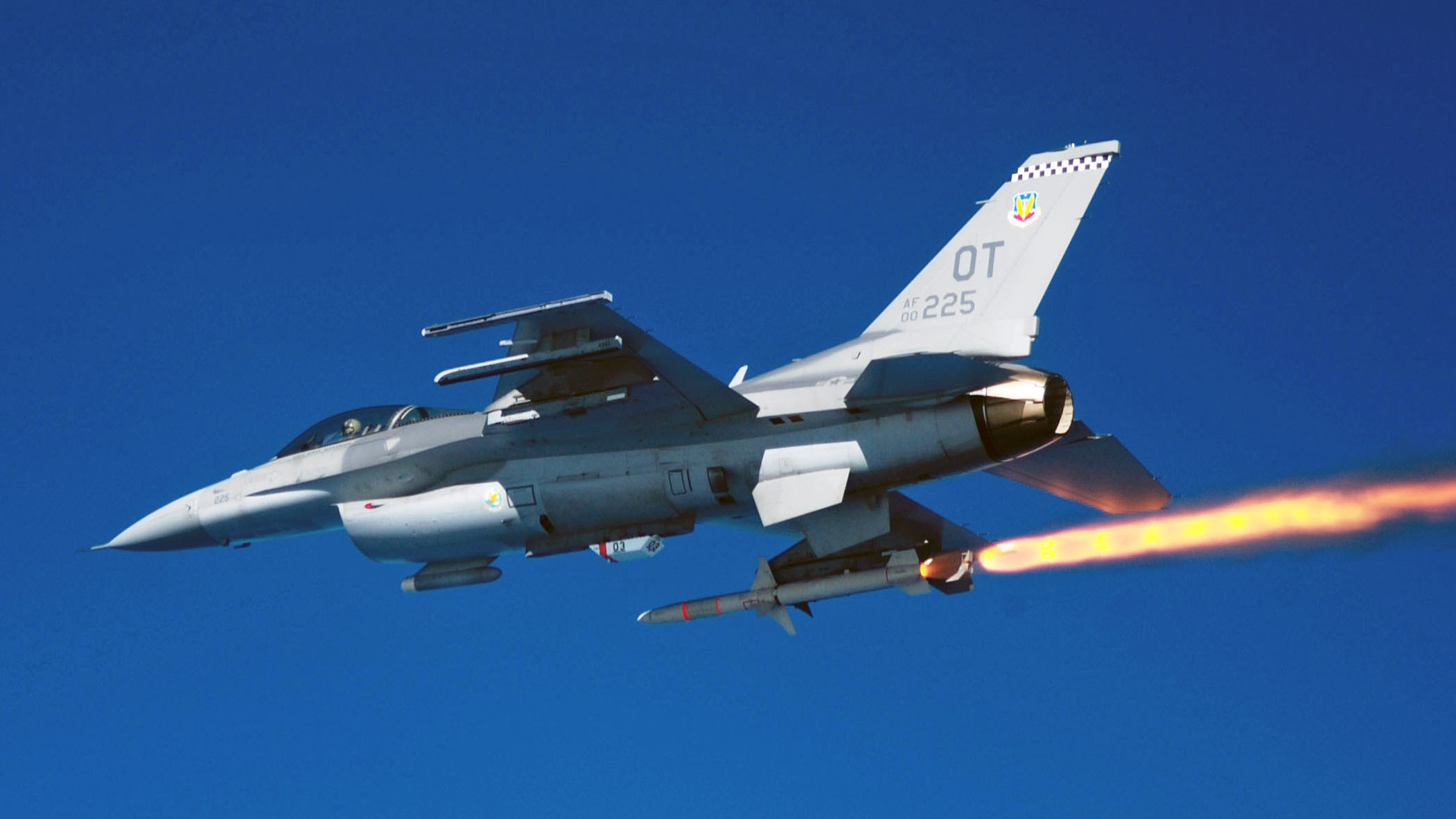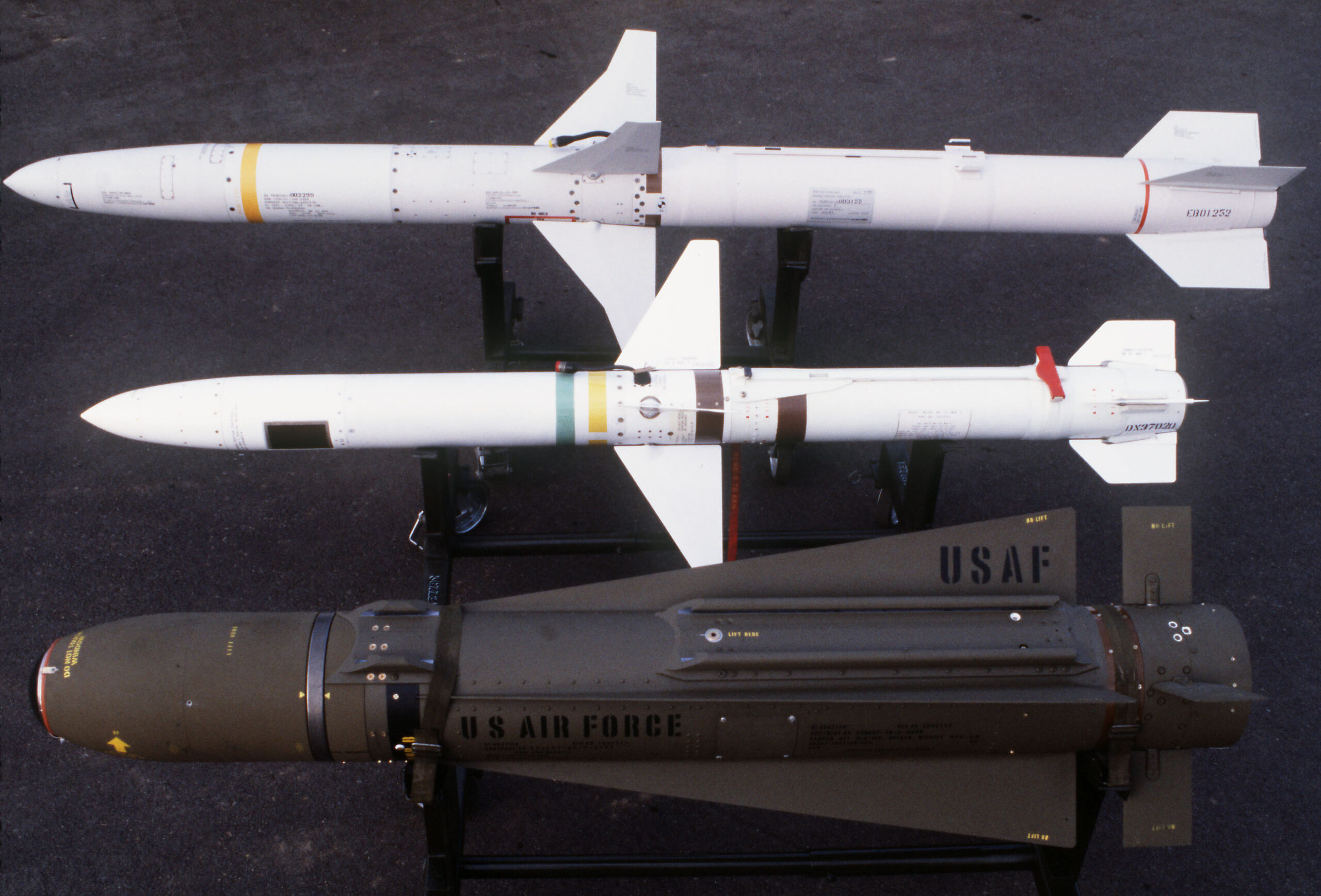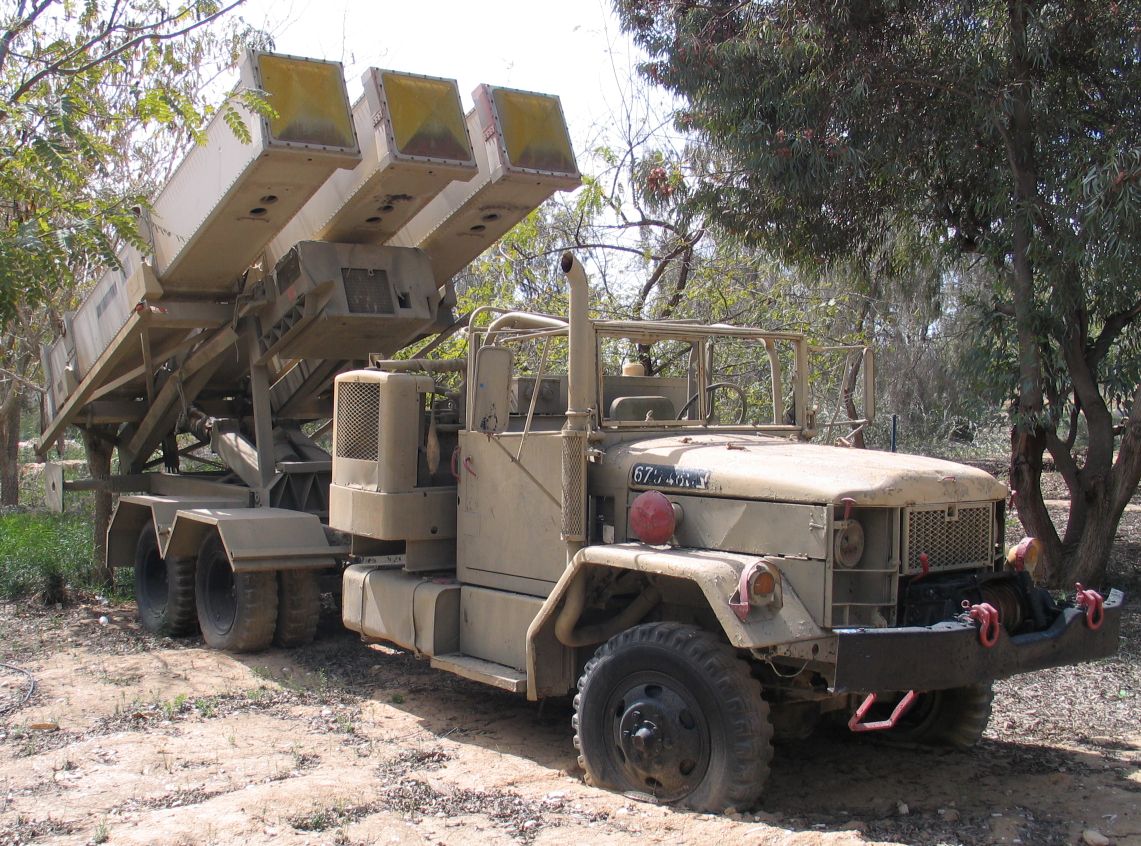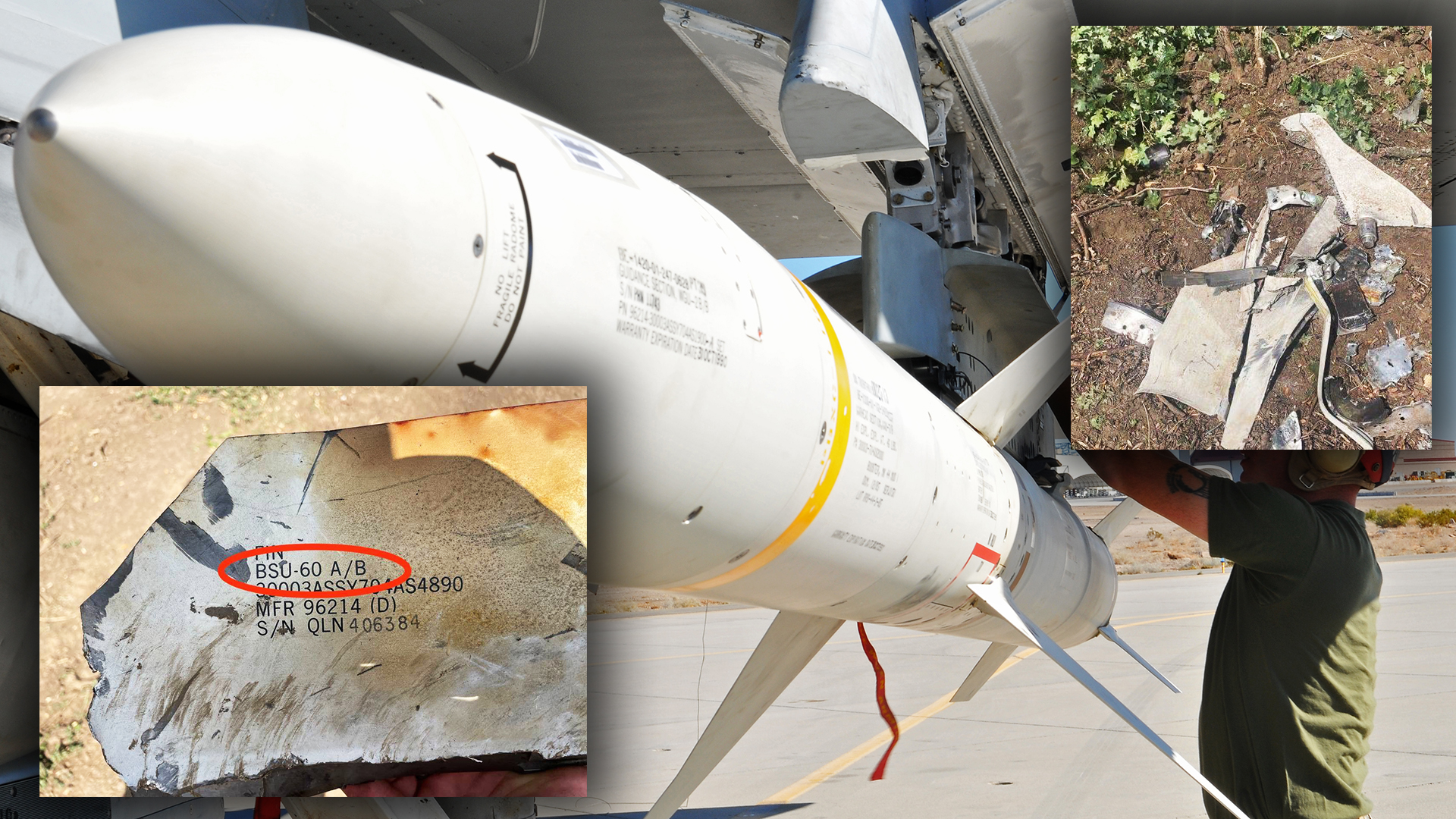Images appeared on the social media platform Telegram on Sunday, August 7th, showing what appears to be the wreckage of an AGM-88 High-Speed Anti-Radiation Missile, or HARM — a U.S. missile used to home in on active air defense radars and disable or destroy them — that is said to have appeared on the battlefield in Ukraine. At this time, there is no official information pointing to the AGM-88 having been supplied to Ukraine, which would be an all-new advanced capability for the invaded nation. In regards to HARMs in Ukraine, here’s what’s possible, what we know, and what we don’t.
First off, it is impossible at this time to say definitively what is going on here. Many HARMs have been fired as part of many military operations’ suppression of enemy air defenses (SEAD) components and in training over the years. Wreckage of some of those missiles, or even intact specimens, has surely found its way into foreign intelligence units’ hands. With that in mind, taking a photo of it and inserting it into the open-source maelstrom that surrounds the Ukraine conflict would be an easy play at disinformation. Manipulating the photo itself is also a possibility. Russia has been increasingly aggressive in its rhetoric about the U.S. and NATO being considered active players in the conflict because of their advanced weapons transfers, this would fit into that narrative nicely.
That being said, after a cursory examination of the images, the stenciled coding and general components look accurate and we don’t see any outright blatant forms of image manipulation, although the image is low resolution, so that is not saying much.

Second, some have jumped to the conclusion that these could have been fired by NATO aircraft as part of a secret air campaign against Russia air defenses. This is extremely unlikely bordering on fiction. There is zero indication that this is the case. In fact, there is every indication that NATO continues to avoid a direct military confrontation with Russia at all costs. Some have even posited that the F-22s that recently arrived in Poland could have fired it on secret missions over Ukraine. This is impossible. The F-22 cannot carry the HARM and even if it could, it could not fit in its weapons bays which would totally negate its low observable advantage.
Could it be possible that a NATO aerial patrol was fired on across the border of say, Belarus, and it fired back to suppress the offending SAM site? Theoretically, yes, but there are absolutely no reports of anything like this and it should have sparked an international incident and would have been anything but a low-profile event. One would think Russia would have been especially vocal about it. We also don’t even know if the standing rules of engagement would support such an exchange of fire. Ultimately, the chances that this came from a NATO aircraft are very small bordering on non-existent.

The most straightforward answer is also a possibility—that Ukraine has been given AGM-88 capability. The missile has various modes in which it can be employed, including being fired without even having an emitter targeted or in a general direction of a detected emitter. This is done for preemptive suppression of enemy air defenses to defend incoming allied aircraft heading into areas that would put them in range of said threats. Today, electronic support measures (ESM) and radar homing and warning receivers (RHWR) have come a long way, making them far more capable, and in some cases, smaller, cheaper, and more accurate. These can be deployed on the ground across the battlefield, or via aircraft, and even by drone. External third-party standoff electronic intelligence, such as that from the United States, could also provide when and where specific systems are active, providing basic targeting for Ukrainian forces.
The question then becomes, if Ukraine actually has AGM-88 capability, how would they employ it?

Air launch is ideal for the AGM-88 as it provides for far better kinetic performance (longer range and speed). It also allows for a far better, elevated sensing position to organically detect the presence and general direction, or even geolocation, of a threat emitter. The AGM-88 could work with relatively minimal integration, potentially leveraging a federated interface, such as e-tablet, for very basic functionality. Ukraine’s fighters are Soviet-era machines and totally lack the right interfaces, including the basic bus architecture, for modern NATO-compatible weaponry. But it’s possible a relatively crude modification could have been adapted for this single weapon. There is also the possibility of a clandestine transfer of Soviet-era aircraft from NATO states that have been upgraded with NATO-standard bus architecture and adaptable avionics that could provide an interface for the HARM. Still, either of these scenarios seems somewhat unlikely considering the battlefield dynamics at play and the work and training required to make it happen.
With that in mind, a ground-launched adaptation is far more likely, and there is a real precedent for this. The AGM-45 Shrike, from which the AGM-88 was partially derived, was ported over into a land-launched concept. The Israel Defense Forces (IDF) used an M4A1 Sherman tank hull as a base for the ‘Kilshon” ground-based anti-radiation missile launcher system. It used the Shrike with a rocket booster that would be launched off a rail-like armature emanating from the top of the vehicle. The system was rushed into service after the Yom Kippur War. It could forward deploy and provide persistence ARM capability without having aircraft in the air constantly or putting them in danger if they were.


Another similar capability was being developed around the same time by the IDF, in the form of the ‘Keres’ system that leveraged an M809 truck with a triple armored box launcher to fire the longer-ranged AGM-78 Standard ARM. It too was deployed in the 1970s and operated through the 1980s, but was pulled from service around the new decade as Israel’s SEAD/DEAD capabilities were rapidly advanced during this same period. These developments included the widespread use of unmanned systems for the role, which you can read all about in this past feature of ours.


So, the idea of porting over a weapon like the AGM-88, which can largely be employed in a relatively automated manner, to a ground-launched configuration is well proven. But fast forward to today and this idea has gained new traction to the point that a containerized concept for deploying and employing the AGM-88E Advanced Anti-Radiation-Guided Missile (AARGM), a newer and far more capable variant of the AGM-88 HARM, as well as even more advanced type, the AGM-88G AARGM-ER now in testing.

This Northrop Grumman concept, which The War Zone was first to report on, could be put on a ship, a truck, or placed at a fixed base. It could also be used for older versions of the AGM-88, as well.

While we are not aware of the system going into development and testing, even if it hasn’t, it’s clear that the idea of migrating ARMs to the ground environment is going through something of a renaissance. There is even a variant of the AGM-88G AARGM-ER optimized for ground launch in development.
Beyond this, we have seen how simple and even relatively crude ground-based adaptations for advanced missiles have been employed in Ukraine via the Brimstone missile. The RGM-84 Harpoon has also been sent to Ukraine together with a ground-based launcher system that may include production and improvised units.

The ground-launched AGM-88 HARM concept, in Ukraine’s case, does makes incredible sense as the frontlines are relatively static, and Russian short-to-medium-range radar-guided air defenses exist very close to those frontlines and are highly active. Even long-range systems are said to be moved closer to the front, pushing Russia’s anti-air umbrella deeper into Ukrainian-controlled territory, at least in terms of being able to target aircraft flying at higher altitudes. According to firsthand accounts, this has really blunted the Ukrainian Air Force’s ability to operate near the front lines.
With this in mind, much like how HIMARS solved the problem of providing rapid precision standoff strike without airpower, a ground-launched AGM-88 could put Russian air defense systems under great threat and keep them from persistently emitting and thus denying Ukraine’s ability to employ airpower where it is needed most. Furthermore, by coordinating air operations with ground-based HARM units, these units could ‘suppress’ Russian air defense while Ukrainian aircraft are present, which works in two ways for Ukraine. First, it provides enhanced survivability for its aircraft while in a high-threat area near the front lines. Second, the presence of Ukrainian combat aircraft suckers the Russian air defense systems into activating, leaving them vulnerable to HARM attacks. Of course, ground-based HARMs could also be used to take opportunistic pot shots at active Russian radar systems without the Ukrainian Air Force present, as well. In fact, this could be its primary role, at least to begin with.
It’s also worth noting that Ukraine’s own staple anti-radiation missile, the Kh-31, has seen extensive use in the conflict so far.
The technological risk of sending HARMs to Ukraine is really quite low, especially if they are from older stocks and/or with altered software. These systems have been used actively for decades in various war zones and even later versions are now being replaced by far more capable types in the guise of the AGM-88E and, eventually, the AGM-88G that is now in development. Devising a ground-launched capability and deploying them without disclosure also makes sense, to a degree, and is well within the capabilities of the U.S. and its allies.
All this being said, it must be stressed that there is just as much a chance that this is another case of disinformation or misinformation, by mistake or by state-sponsored choice, as it is evidence that HARMs are on the battlefield in Ukraine. Regardless, its presence would make sense and would fit with increasingly advanced arms transfers from the U.S. and NATO to Kyiv. Above all else, it would put Russia’s air defenses, which have largely operated with impunity minus the threat from drone and artillery strikes, under direct and persistent threat.
If HARMs are now on the ground in Ukraine, we probably will be seeing more of them soon.
UPDATE:
Apparently, Ukraine’s defense minister Oleksiy Reznikov was quoted by Ukrainian media as recently saying anti-radiation missiles would be sent to Ukraine during a national address (translated):
“Based on this level of trust, we will continue to receive assistance. And you definitely saw the package announced, if I’m not mistaken, for $270 million with the signature of the President of the United States that we will get four more HIMARS, we will get special anti-radar missiles that we had before. This will allow you and I to effectively destroy their (the enemy’s – ed.) radar system, essentially blinding the enemy, which will give us the opportunity to gain an advantage for a counteroffensive.”
It still isn’t clear if this is related to the HARM development, but it would seem very possible. The $270M aid package Reznikov is referring to was announced in late July.
Also, it’s worth noting that the HIMARS launcher could potentially be adapted to fire a ground-launch AGM-88 and has the interface that could be adapted to control it. Similar studies, as well as tests, were done for using HIMARS as an air defense platform over a decade ago, including launching the AIM-120 AMRAAM.
It’s also worth mentioning that no matter how a potential ground-launched AGM-88 is boosted (it at all), its range would be significantly decreased compared to air launch. We are talking a huge penalty here, especially without a booster.
UPDATE 2:
The U.S. military has now confirmed sending unspecified anti-radiation missiles to Ukraine. You can read more about this disclosure and other new information that has now come to light in relation to this story here.
Contact the author: Tyler@thedrive.com
